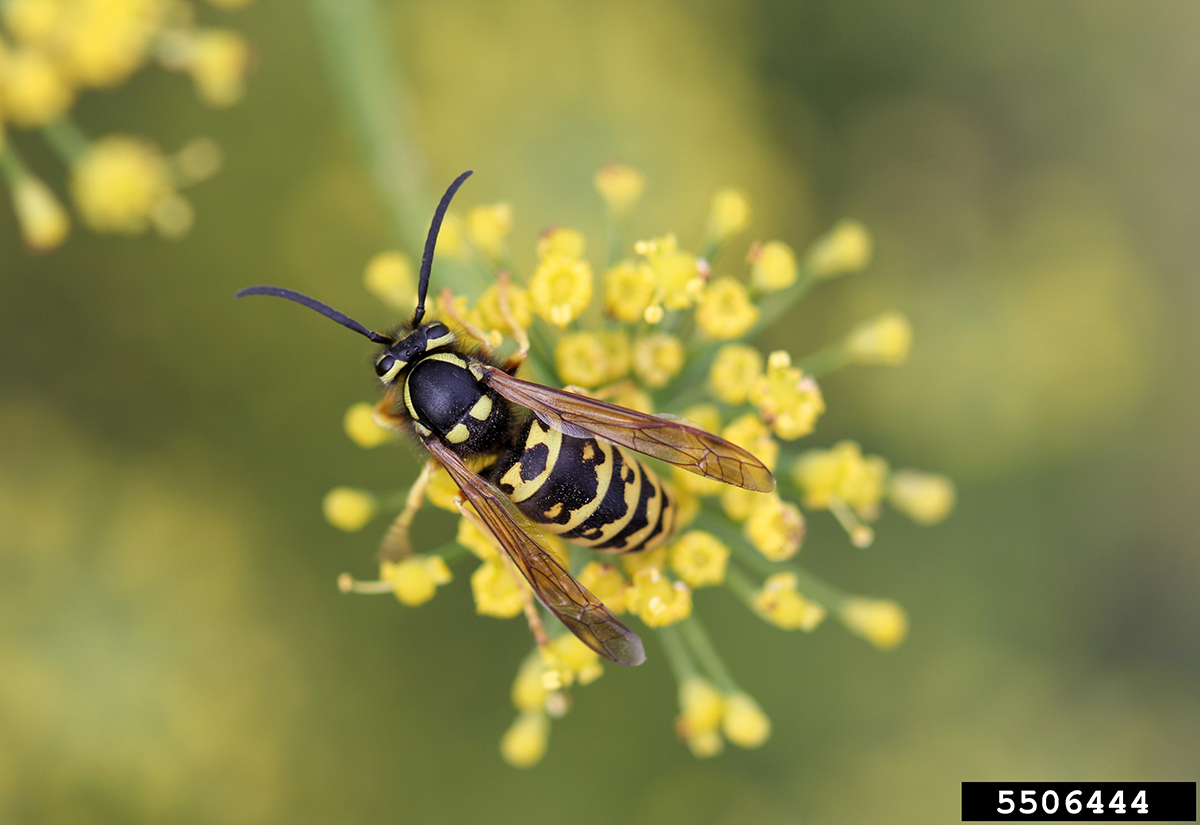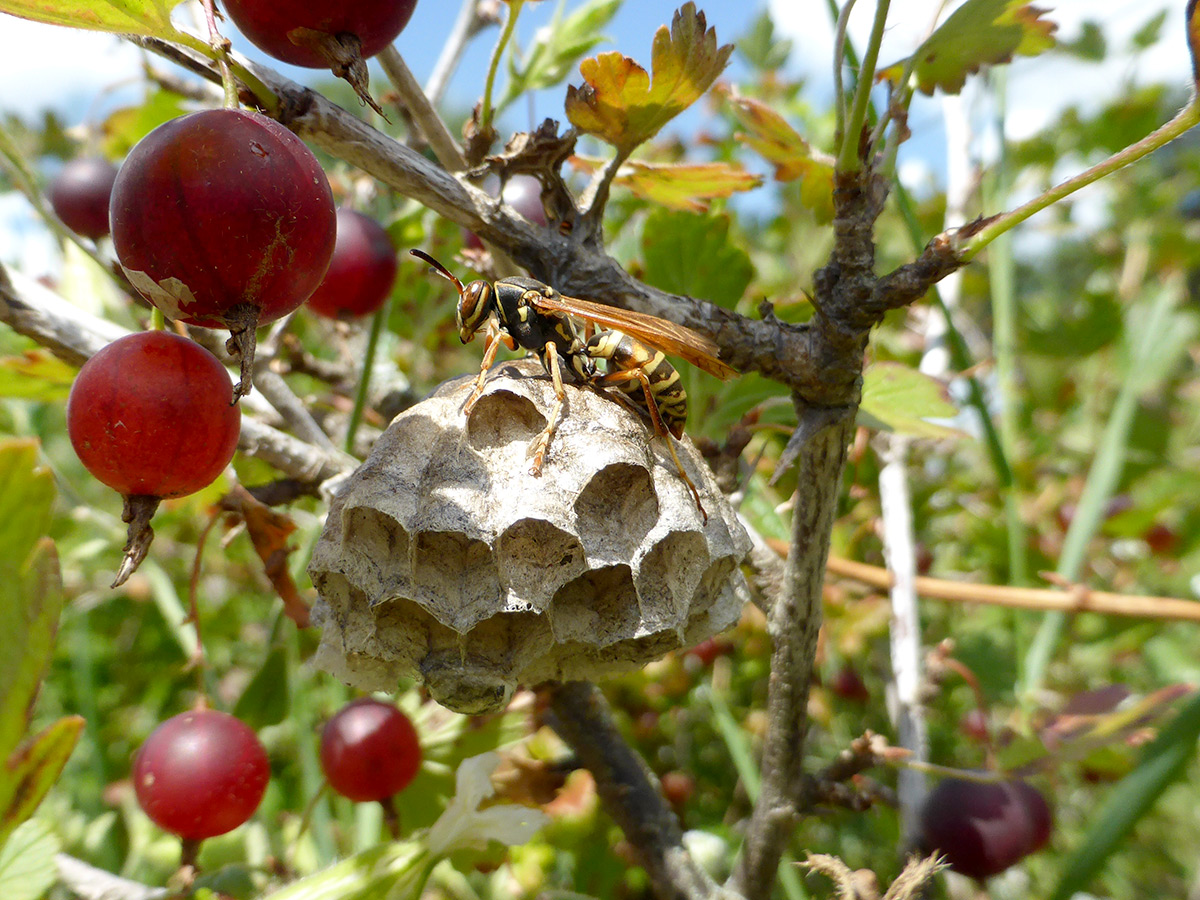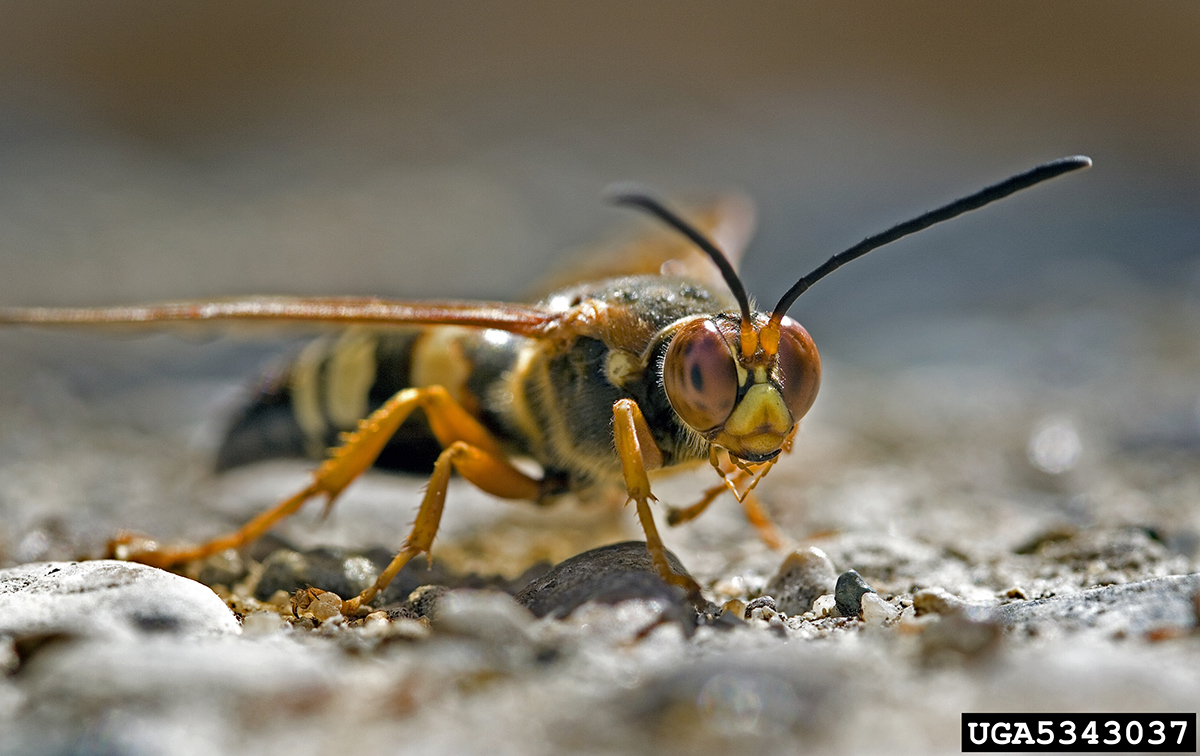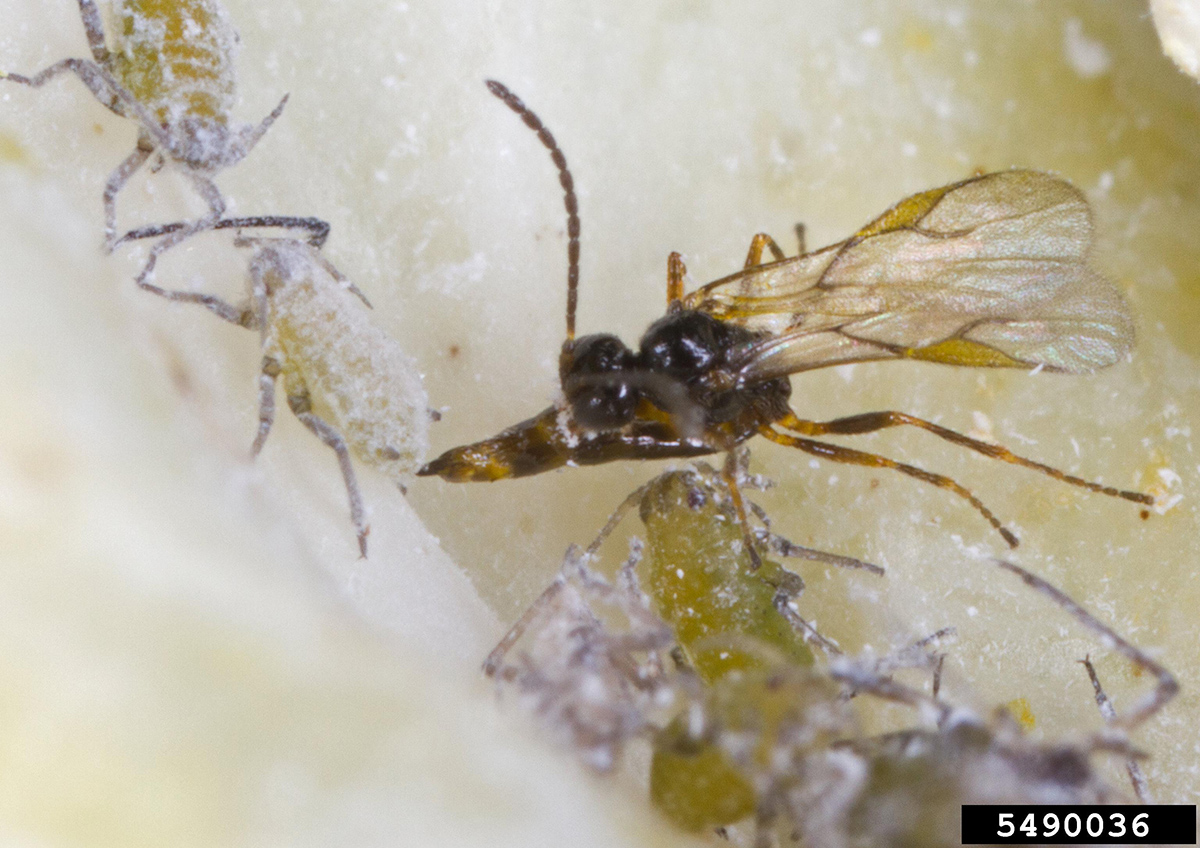As the end of summer approaches, people often observe an uptick in visitors to backyards and parks — wasps! Despite their reputation for stinging people while sneaking sips of soda, only a few wasp species create conflict with people. As a group, wasps have incredibly diverse life histories. They are predators or parasitoids of a variety of pest insects, pollinate flowers, and play an essential role in home yards and broader ecosystems.
Food sources are a key difference between bees and wasps
Though there are thousands of wasp species in North America, the wasps that get the most attention are yellowjackets (genera Vespula and Dolichovespula). These black and yellow/white striped insects are common in yards and parks, where they build nests in the ground (Vespula) or in the air (Dolichovespula). Similar to bumble bees, they are social insects, meaning they live in colonies, each with a queen and workers.
Wasps and bees are closely related. A key difference between them is that bees eat pollen and wasps are meat-eaters. Adult wasps hunt other insects to feed their protein-hungry larvae and are important parts of the food-web. Many herbivores that might otherwise cause problems for plants, including various caterpillars and flies, are kept in check by their inconspicuous natural enemies like wasps.
Understanding and preventing yellowjacket encounters
Though they are excellent at hunting for their offspring, adult yellowjackets don’t eat their prey. Instead, they snack on sugary flower nectar, fruits, and even ingest a sugary excretion produced by their own larvae. In part, this is why yellowjackets become more of a nuisance pest at the end of the summer. As their larvae develop, pupate, and leave the nest they lose a main source of sugar and start looking for sweet snacks elsewhere. Yellowjacket populations also increase throughout the season as the colony grows. Though they’re present in our yards all summer long, many of us don’t notice yellowjackets until later in the season.
Yellowjackets and people often cross paths in spaces like patios, picnic areas and parks. Xerces always recommends prevention as a first step to control problematic wasps. This involves minimizing the conditions that favor wasps and lead to conflict with people. Some useful prevention steps are sealing trash cans securely, emptying them frequently, and ensuring food and drink aren’t left outside.
Vespula species, the most commonly encountered, often nest in holes like old rodent burrows. In the winter when there are no wasps, you can collapse rodent burrows in your yard to prevent yellowjackets from nesting in them the following season. (Note that the introduced German yellowjacket does sometimes nest in structures such as walls). Something to keep in mind is that yellowjacket colonies die off in the fall and do not reuse nests, so you may not have issues in the same location in subsequent years.

Other common wasps
There are many other types of wasps that live in our yards. Many people are familiar with paper wasps (in the Vespidae subfamily Polistinae), which are sometimes confused with yellowjackets. The papery, umbrella-shaped nests of these species can be found dangling from tree branches and the undersides of porches and doorways. Contrary to popular belief, they are rarely aggressive, although nests may need to be removed in high traffic locations like doorways. Paper wasps often hunt caterpillars to feed their young, and they (along with other wasp species) can function as generalist pollinators.

In contrast to yellowjackets, most other wasp species are solitary. This means they have no colony; each female lays eggs and collects all the food for her small nest. Without a colony to defend, solitary wasps tend to keep to themselves and not bother people. Common species you might see are sand wasps like Bembix spp., who dig nests in the ground, or mud daubers, who form small nests out of mud on flat surfaces. Solitary wasps hunt a variety of insects, including flies and caterpillars. In the eastern United States “cicada killer” wasps are a common sight. Despite their intimidating size, they aren’t interested in people — only in hunting cicadas!
The largest and most varied group of wasps are parasitoids. Some estimates suggest there may be over 1 million species of parasitoid wasps worldwide! These wasps are tiny, and vary in size and color from long orange Braconidae to shiny jewel-green Eulophidae, to miniscule Trichogramma wasps half a millimeter long. They can’t sting! Instead of a stinger, they have a long ovipositor (an egg-laying structure) used to deposit eggs on or inside their insect hosts. When these eggs hatch, the parasitoid larvae feed on the host as they develop, eventually killing it. This makes them very effective at controlling pest insects in the garden.

How to protect beneficial wasps
Given the important role wasps play in the ecosystem, what can home gardeners do to bolster habitat for beneficial wasps? Eliminating home pesticide use is an important step, since wasps are often very sensitive to common pesticides. When natural enemies such as parasitoid wasps are killed by pesticide applications, pest populations often rebound because the insect community has lost the predators and parasitoids that keep them in check.
Planting a diverse assemblage of native plant species can also boost natural enemy populations, including wasps. Habitat plantings provide shelter and food, including nectar and alternative insect host species, within varied microhabitats. Many parasitoid wasps overwinter within their hosts in leaf litter or on senesced plant stems, so “leave the leaves” and “save the stems” in the fall to provide habitat for wasps and a broad suite of other beneficial insects, from beetles to butterflies. Even better, since many adult wasps sip on nectar from flowers, pollinator plantings can serve as habitat for beneficial wasps, a true conservation win-win.

Author
Aaron Anderson works with the public and Xerces staff to reduce pesticide use in residential landscapes, including promoting alternative pest control measures and pollinator-friendly gardening practices. Prior to joining Xerces in 2022, he researched pollinator conservation in urban landscapes, restored habitat for several endangered butterfly species, and worked in insect biocontrol. In 2021 he was an AAAS Mass Media Fellow at the St. Louis Post-Dispatch, where he reported science and business stories.






